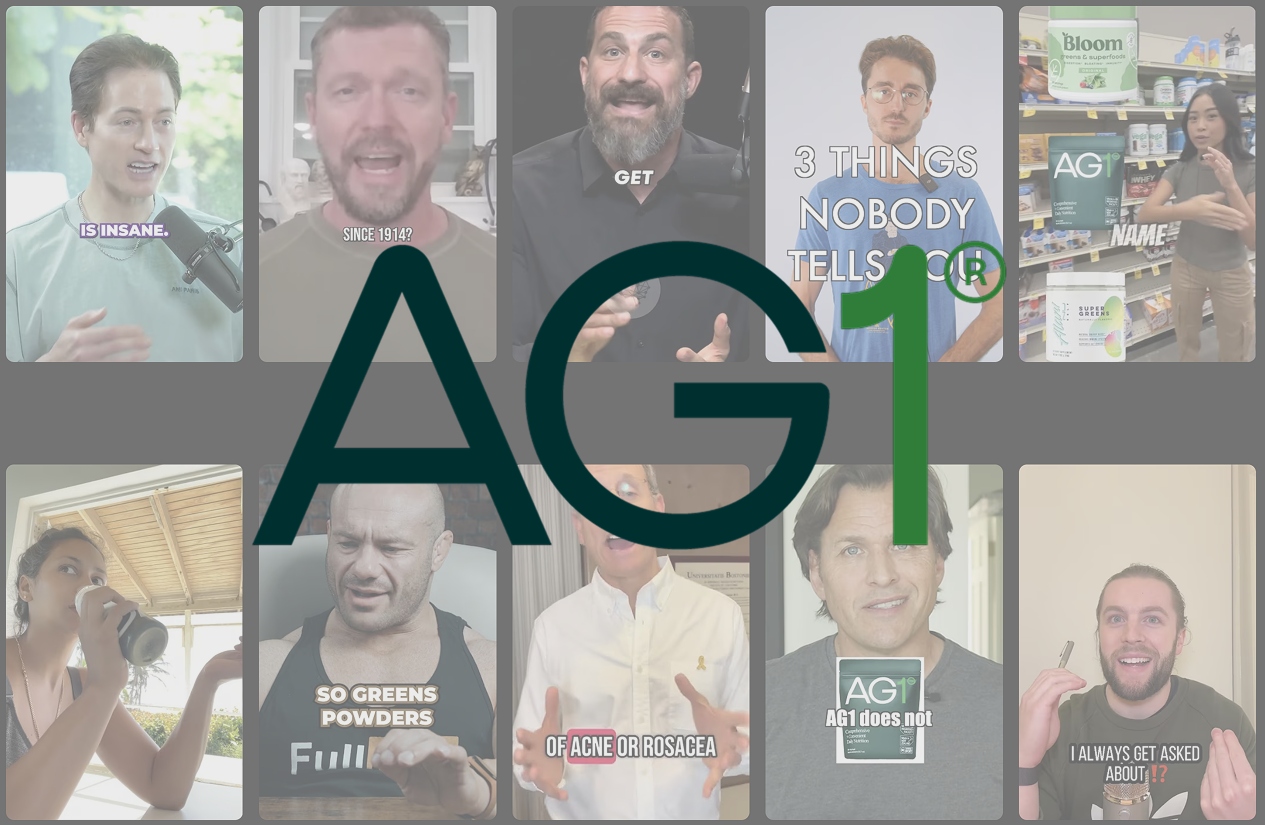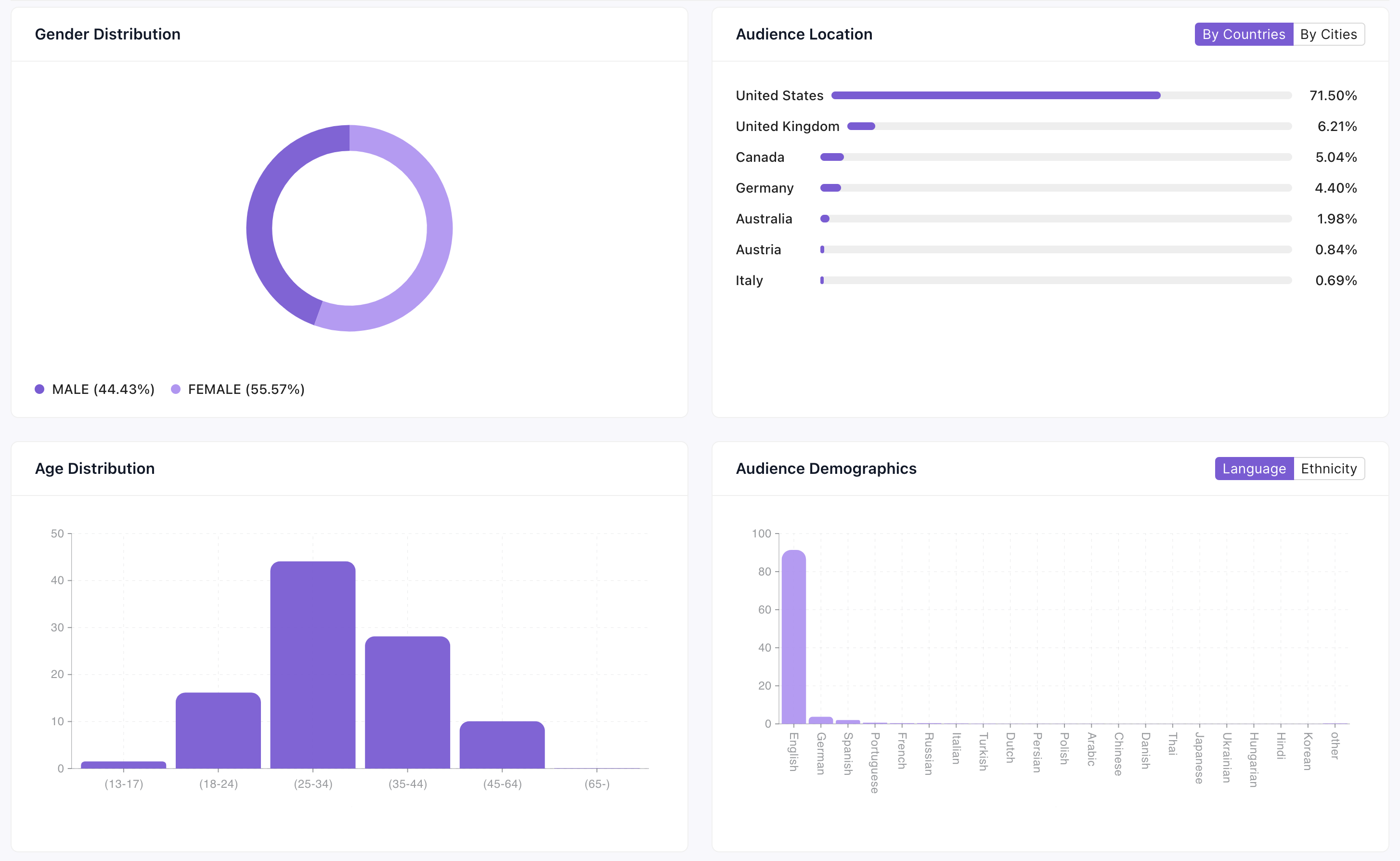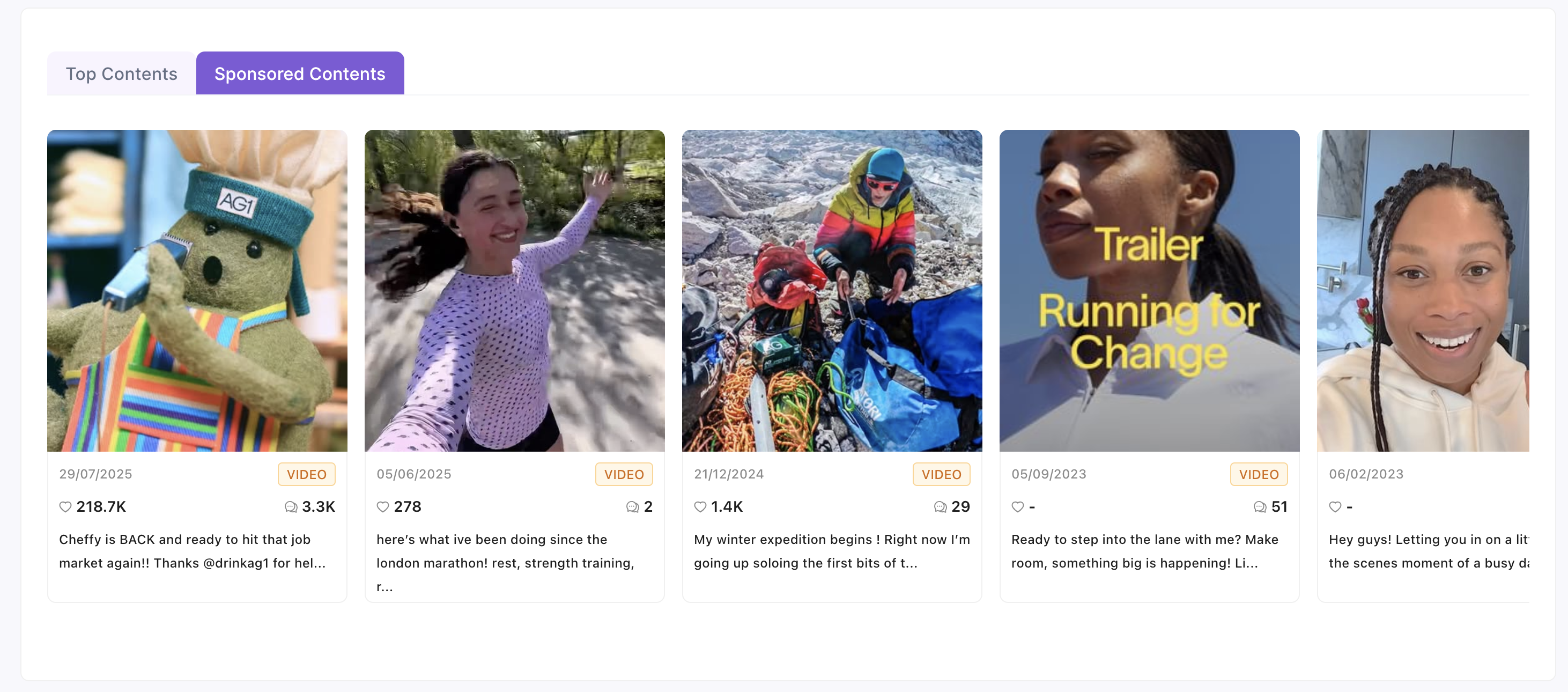Give your team an unfair advantage
SEVA helps your team focus on things that matter, automates the rest so they can get creative—not sedative.
1 August 2025

Athletic Greens, known for its flagship product AG1, has grown from a niche supplement into a widely recognized wellness brand. Its growth did not rely on traditional advertising or aggressive product launches. Instead, it focused on building meaningful relationships with creators who already used and trusted the product.
The influencer strategy behind AG1 was not based on volume. It centered on depth—partnering with individuals whose lifestyles aligned with the product. This method helped AG1 create trust with potential customers without relying on one-size-fits-all endorsements.
This article outlines how AG1 approached influencer marketing and how that strategy became a key factor in the company's growth over the last decade.
AG1 began by identifying creators who already used the product or who showed a clear interest in health and wellness. Before offering formal partnerships, AG1 often sent samples to potential influencers to gauge their experience with the product. This approach allowed the brand to work only with individuals who could speak honestly about AG1.
This authenticity-first model formed the foundation of AG1's strategy. When influencers shared their real experiences, their content came across as more trustworthy. Unlike scripted product placements, these stories were based on actual use, which resonated more deeply with audiences.
Instead of casting a wide net, AG1 built fewer but stronger relationships with creators. This focus on relevance over reach helped the brand stand apart in a space where many companies prioritized scale over fit. AG1's partnerships often included people who had used the product for months or years before recommending it.
Some of the brand's most effective partnerships involved creators sharing personal health journeys. For example, podcast hosts like Andrew Huberman and Tim Ferriss discussed their long-term use of AG1, often mentioning how it fit into their daily routines.
Key takeaways:

AG1 allocates an estimated $2.2 million per month to podcast advertising. This strategy plays a central role in how AG1 promotes its product. Podcasts are effective for supplements like AG1 because they allow for longer-form content that includes product education and trusted recommendations.
Host-read ads featuring personal testimonials from podcast hosts have become a signature of AG1's approach. Podcasters such as Tim Ferriss and Andrew Huberman share how they integrate AG1 into their routines. These stories create a sense of familiarity and make the promotion feel more like a recommendation than a scripted advertisement.
AG1 signs long-term partnerships with podcast hosts, typically lasting 6 to 12 months. These contracts allow the brand to show up consistently in episodes, reinforcing brand recognition. This long-term approach contrasts with one-time ad placements, enabling AG1 to build familiarity with audiences over time.
The selection process focuses on audience alignment rather than total reach. AG1 selects podcasts across specific categories, including wellness, fitness, business, and lifestyle. This enables the brand to reach various but relevant audiences.
Why podcasts work for AG1:

Whitelisting is when a brand runs paid advertisements through influencer accounts rather than their own. The influencer gives the brand permission to place ads using their name and content. The result is an ad that looks like it came directly from the influencer, not from the brand.
AG1 used whitelisting to increase the visibility of its product across social platforms. The brand partnered with creators who already had trust and credibility with their audiences. AG1 then ran ads using those influencers' posts, helping the ads appear more native and familiar to the influencer's followers.
This strategy improved engagement rates, meaning more users interacted with the content. According to industry benchmarks, whitelisted ads often perform up to twice as well as ads run from a brand's own account.
In AG1's campaigns, whitelisted content often featured real routines and testimonials from health creators. These ads blended into users' feeds, making them more likely to engage with the post, watch the video, or click the link. The brand applied this strategy across Instagram and Facebook, using creators in the wellness and performance space.
Benefits of whitelisting for AG1:

AG1 used an affiliate marketing program to support its influencer partnerships. Influencers received a commission of approximately 20% for every sale they referred. This approach encouraged ongoing promotion and helped AG1 convert influencers into long-term marketing partners.
Each influencer received a unique tracking link and discount code. These personalized links allowed the company to trace which sales came from which influencer. They also gave influencers a way to offer exclusive deals to their audiences.
AG1 tracked specific metrics from the affiliate program to evaluate performance, including conversion rate, average order value, and customer lifetime value. The data from these metrics was integrated into AG1's broader marketing analytics. This connection allowed the team to assess ROI and adjust influencer relationships based on outcomes.
By connecting influencer compensation directly to sales, AG1 created a system where both the brand and the creator benefited from successful promotion. This alignment of incentives helped sustain partnerships over time.
Key affiliate program elements:
AG1 used user-generated content (UGC) from influencers and customers to increase visibility and engagement. They focused on platforms like Instagram and TikTok, relying on creators to post content rather than building their own TikTok presence. The hashtag #AthleticGreens has generated over 86 million views across social platforms.
AG1 guided influencers with structured tools that helped them create specific types of content. These tools included creative briefs that outlined the brand's messaging goals, content guidelines to ensure alignment with AG1's visual style, and storytelling frameworks that encouraged creators to share detailed, personal routines.
The result was content that often included daily habits, health routines, and long-term use of AG1, rather than one-time mentions. This approach created a more consistent brand presence across different creator channels.
AG1 selected high-performing influencer posts and reused them across their marketing channels. By curating and reusing select UGC, AG1 maintained consistency without creating all content internally.
Types of UGC that performed well:
Also read: How Alo Yoga Built a Purpose-Driven Influencer Community
AG1 selected influencers who were already familiar with the product or had values aligned with health and wellness. This approach filtered out creators who lacked product familiarity or long-term relevance to the brand's positioning.
A structured framework helped evaluate potential partners. This included reviewing content quality, alignment with brand values, audience engagement, and historical brand affinity. The goal was to identify creators who could speak authentically about the product.
AG1 used a commission-based affiliate model to encourage sustained promotion. This turned influencers into invested partners. The structure reflected the expected outcomes of the campaign and created clear incentives for ongoing promotion.
AG1 prioritized channels based on audience behavior and product education needs. Podcasts were prioritized over TikTok due to longer-form content and audience trust. This choice reflected an understanding that different platforms serve different purposes in an influencer strategy.
Effective approaches for brands:
AG1 maintained consistent growth by structuring its influencer partnerships for long-term stability, not short-term exposure. The brand treated influencer relationships as ongoing collaborations rather than one-time transactions.
To support this, AG1 used a system of regular communication. Influencers received monthly check-ins from dedicated account managers. These managers helped with campaign planning, performance reviews, and creative support, creating a predictable and responsive communication cadence.
The brand also invested in community-building among its top partners. AG1 hosted exclusive wellness events, invited creators to private online groups, and shared early access to product updates. These activities helped influencers feel connected to both the brand and each other.
By structuring these systems early, AG1 created a consistent and scalable process for managing influencer relationships at scale. This approach supported both retention of top performers and consistent messaging across channels.
Relationship management strategies:
AG1's influencer marketing strategy is built around consistency, alignment, and measurable performance. Their method relies on strengthening relationships with creators who already use their product and maintaining long-term collaboration formats across high-trust channels.
The model prioritizes controlled growth over broad outreach. This approach has helped AG1 build a recognizable brand through authentic partnerships rather than traditional advertising. The focus on long-term relationships and performance measurement has created a sustainable growth engine.
Platforms like SEVA combine influencer discovery, campaign tracking, affiliate attribution, and communication into a single system. This simplifies the process of applying these strategies across multiple creators and channels.
To learn more about how SEVA can help apply these strategies efficiently, schedule a demo:
AG1 allocates a large portion of its marketing budget to influencer partnerships, with a particular focus on podcast advertising. The brand spends about $2.2 million per month on podcast sponsorships alone, which is part of a broader influencer strategy that includes affiliate commissions and content amplification.
AG1 operates a high-volume influencer program across multiple channels, requiring platforms that combine campaign tracking, communication, and performance analytics. These systems help coordinate outreach, track affiliate links, and monitor engagement across platforms. Comprehensive solutions like SEVA consolidate these features into one system.
AG1 tracks performance using metrics tied to both short-term and long-term outcomes. Their measurement framework emphasizes attribution through custom URLs and discount codes to identify which creators drive traffic and sales. Key metrics include conversion rate, average order value, and customer lifetime value.
AG1's strategy differs from competitors by focusing on alignment and depth rather than scale. The brand works with influencers who already use the product, invests in long-term partnerships, and integrates influencer content into multiple channels like podcasts, paid ads, and landing pages.
SEVA helps your team focus on things that matter, automates the rest so they can get creative—not sedative.